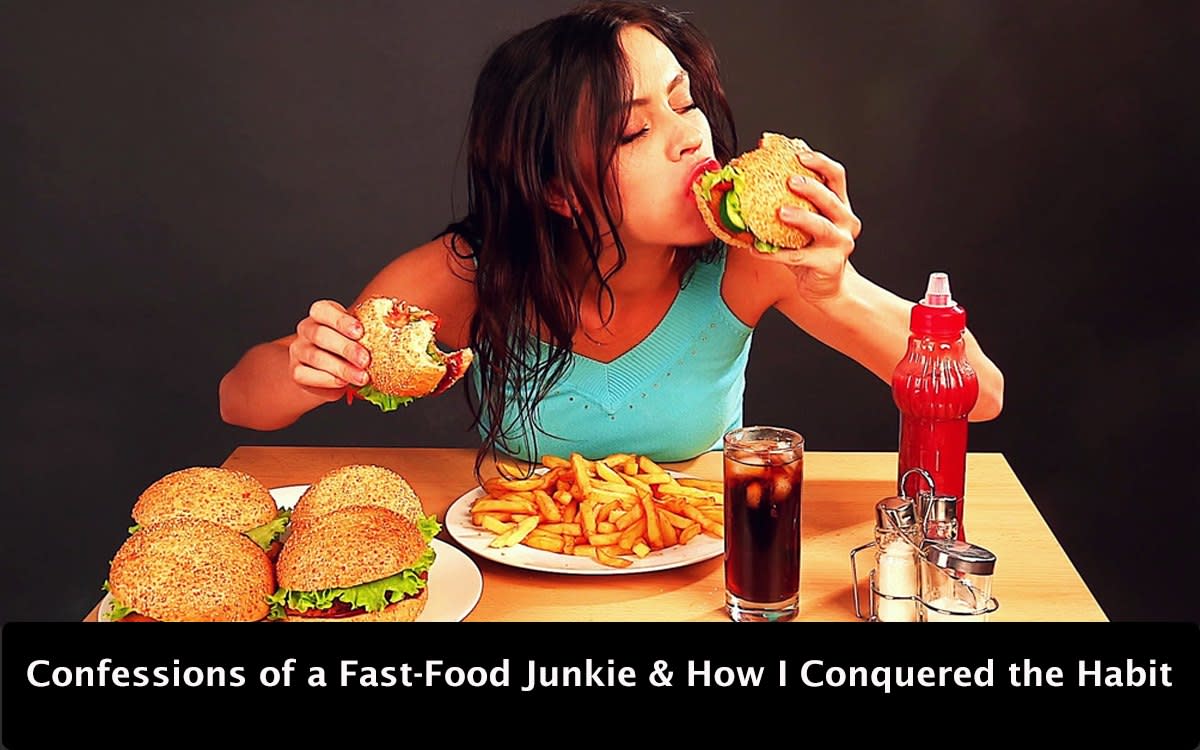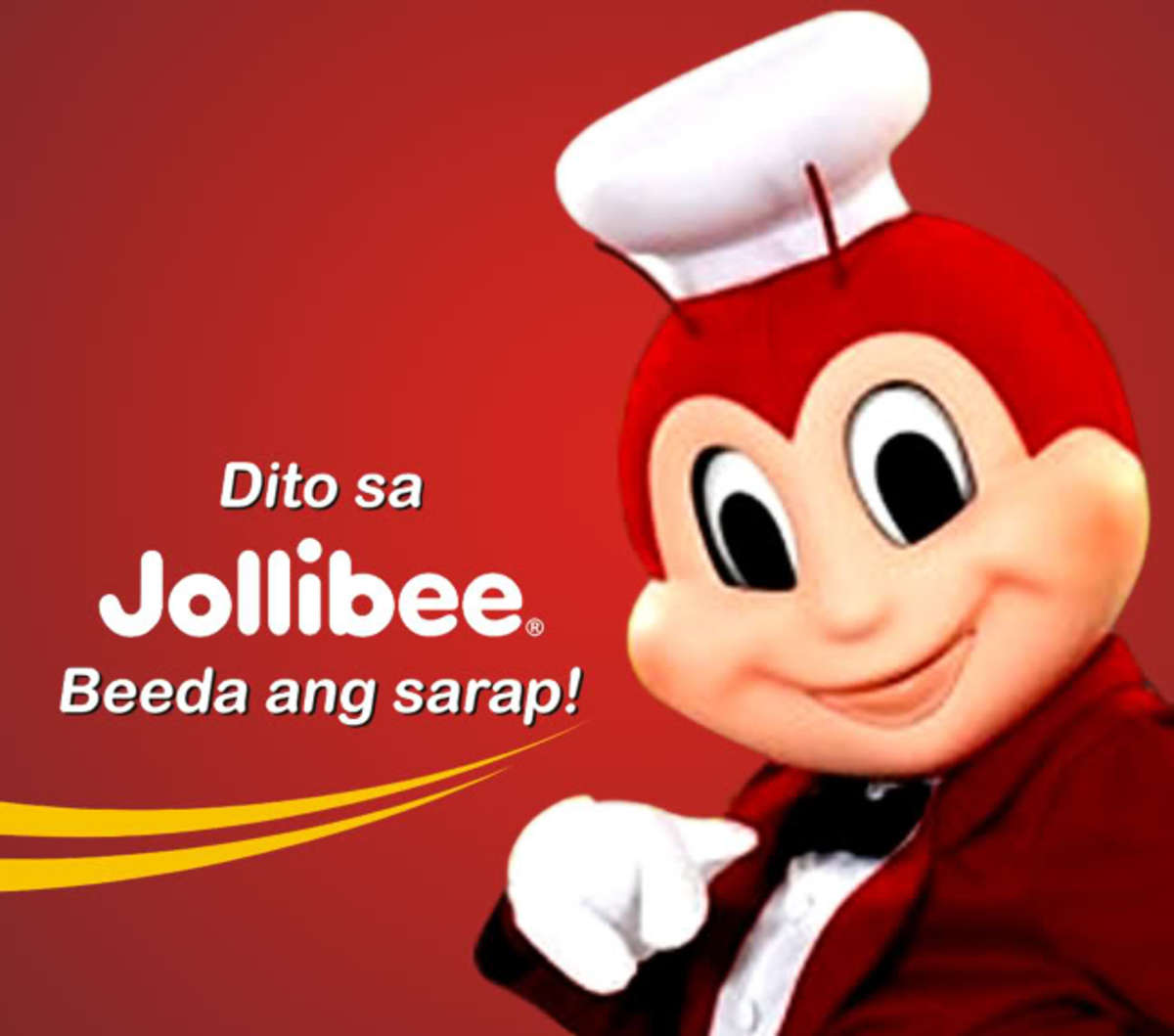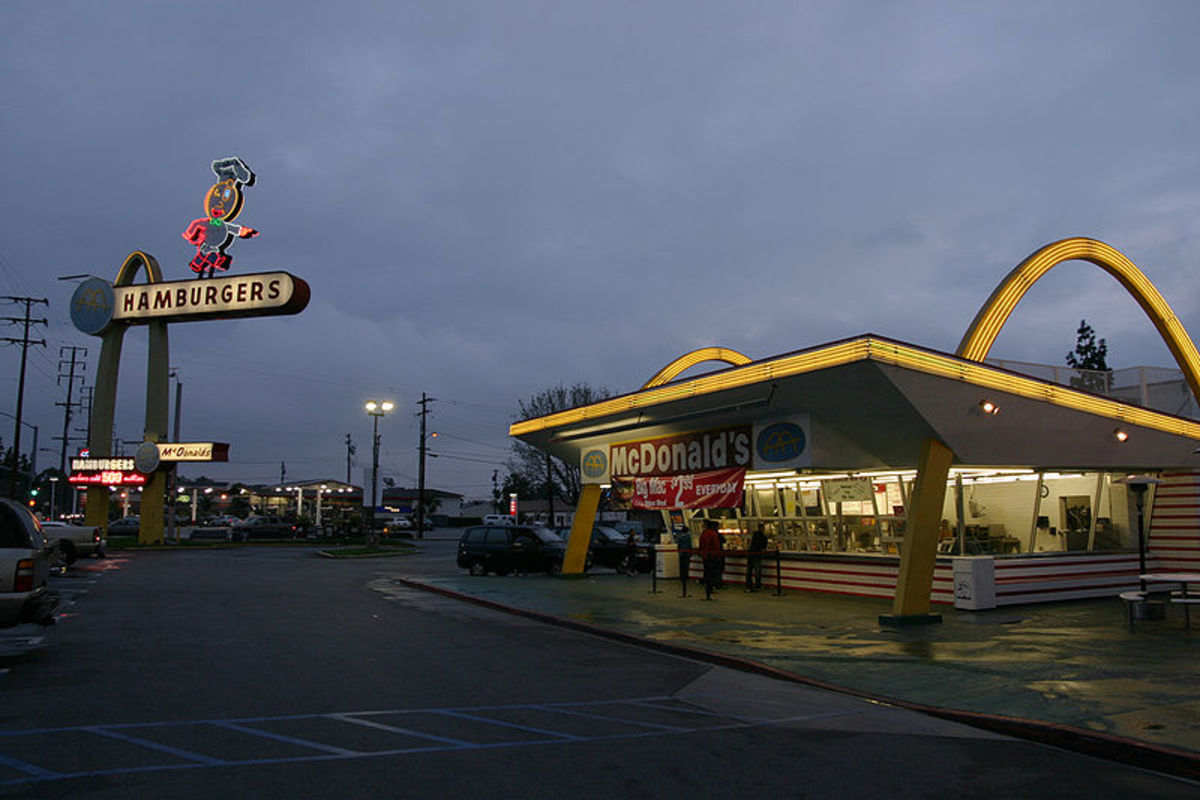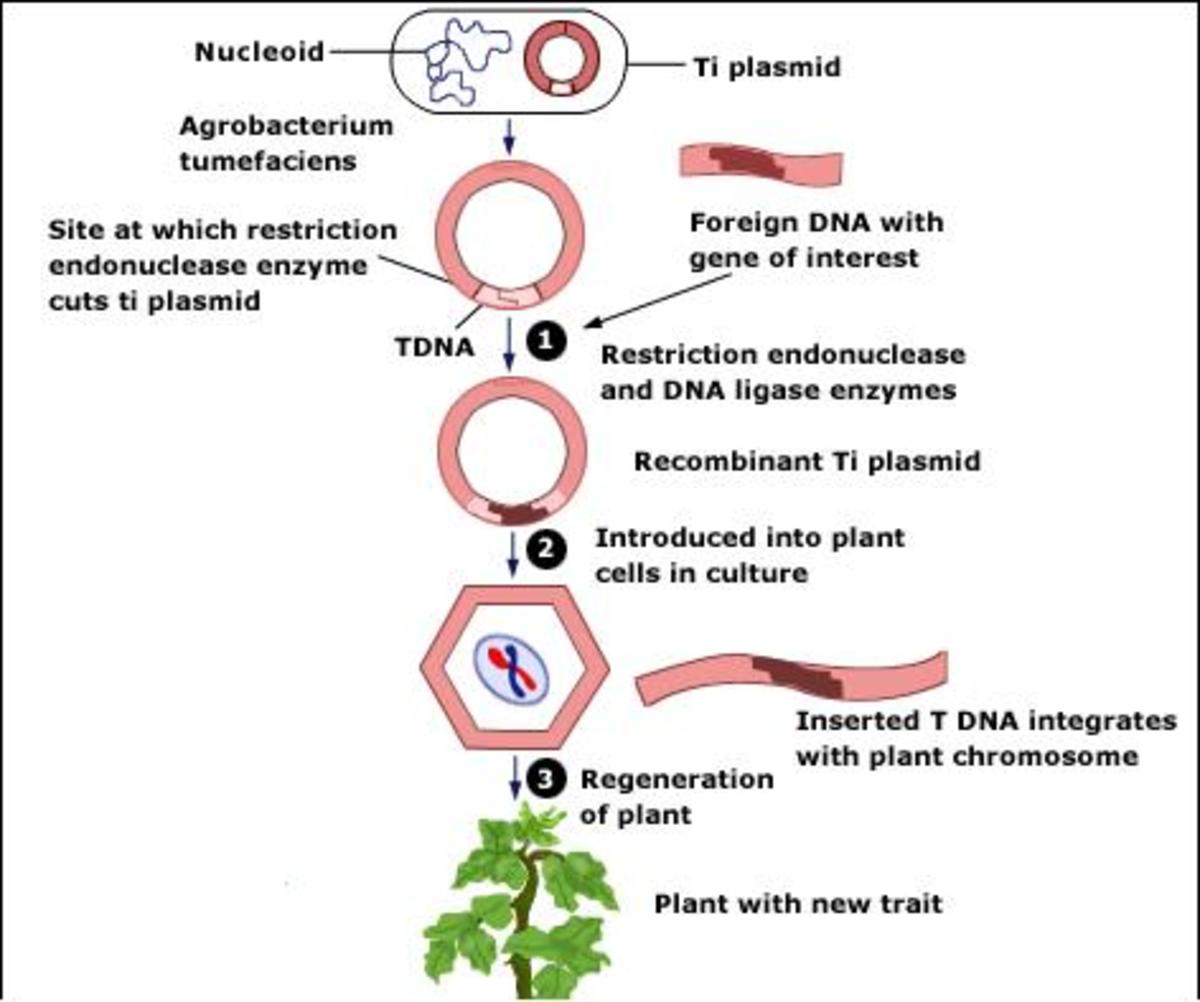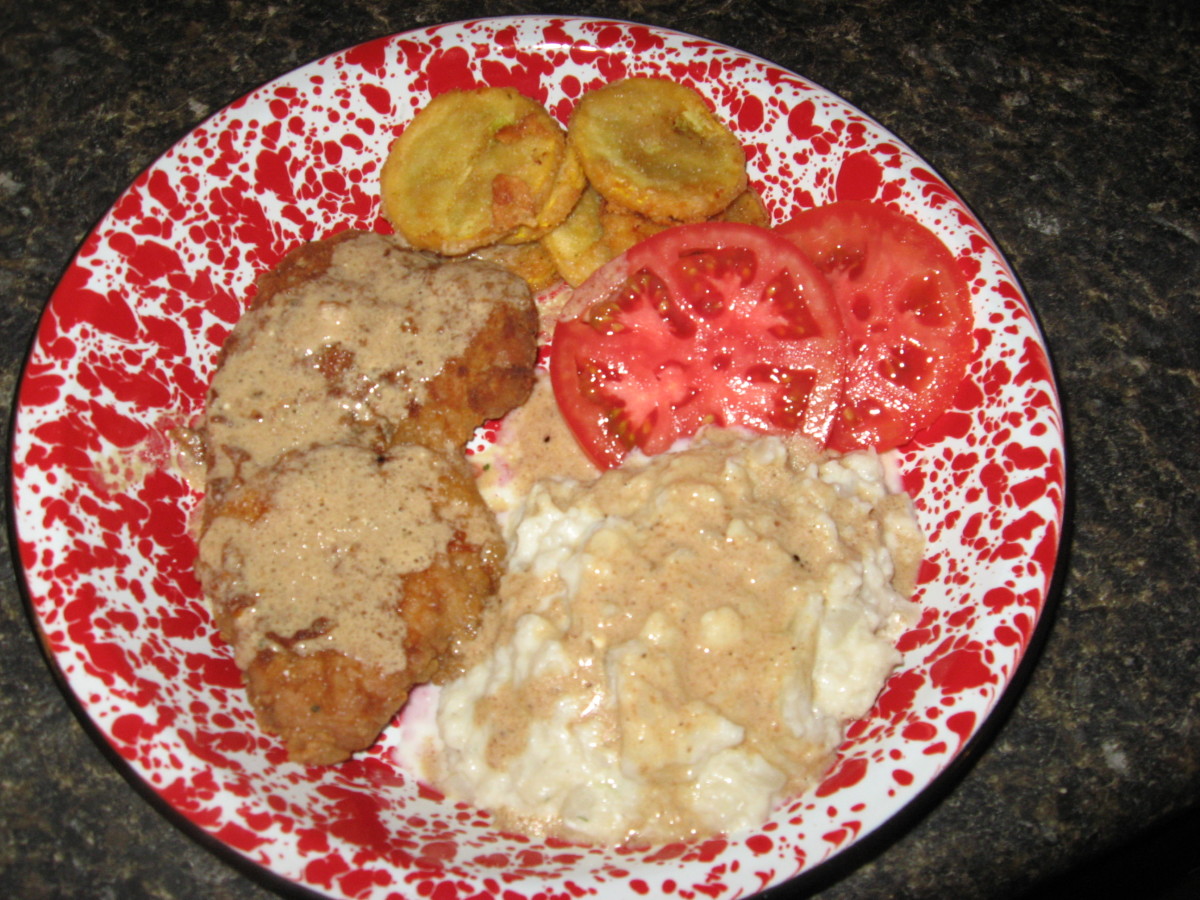Carlo Petrini and His Slow Food Movement
A Reaction to Fast Food
January 2,2010
Everyone knows what fast food is - food that is ready to eat as soon as you order it.
Simply drive to the nearest McDonald's, Burger King, etc., enter the lane for the drive up window, speak your order into the microphone and then proceed to the pick-up window where your ready to eat food will be waiting for you.
If you can spare the time, you can also exercise the option to park your car, walk inside, order and pick it up at the counter and then sit down at a table and eat it. While the sit down option is slightly slower than the drive through option, the entire atmosphere of the establishment is one of get in, order, eat and leave.
These establishments exist for the purpose of providing people in a hurry with a quick meal at a reasonable price.
According to Sir Isaac Newton's Third Law of Physics when one object exerts a force on another object the second object exerts a similar force on the original one in the opposite direction or, in layman's terms, for every action there is an equal and opposite reaction.
Anyone who has ever fired a rifle is familier with this law since when the bullet is fired forward from the rifle the rifle itself kicks back against the person doing the shooting. While not as precise as physics, a similar phonenomen exists in the social sciences as when society undergoes a major cultural or political change a reaction in the opposite direction eventually follows.
For Humans, Food Satisfies Both Physical and Social Needs
Fast food as we have come to know it came about in the 1950s and 1960s with the rise of the automobile which, in turn, gave rise to small roadside stands offering a quick meal from a limited menu.
People out for a Sunday drive or traveling someplace by car liked the convenience of being able to satisfy their hunger without having to delay their trip.
Ray Kroc then took this to the next level by building a nation-wide (now world-wide) chain of restaurants that provided the same fast service and standard menu throughout the chain. While the food was not gourmet by any means, there were no surprises either as the food and service were nearly identical throughout the chain.
For humans, food has come to be used to solve two basic needs - nourishment and fellowship. We need food to survive and for this anything that is edible and contains the nutrients needed to sustain life and provide energy will do. We also use food as a means of drawing closer to other human beings - the celebatory feast, a romantic engagement, the family dinner table, etc.
It is common for people to get together when they eat and many holidays and social occasions have food or a meal as the focal point of the event.
Of course we can grab a quick bite of food alone consuming it for the sole purpose of nourishing and re-energizing ourselves. Food can also serve just a social and not nutritional purpose as when we sit down with a friend over a cup of coffee which, while enjoyable, can hardly be considered to be nourishing in the nutritional sense.
So called fast food has the reputation of being an act of solitary consumption undertaken to satisfy our body's need for nourishment.
We are eating not for social reasons and not eating to enjoy the taste but mostly to curb our hunger pangs. Going from dining on food that has been lovingly prepared and intended to be shared and leisurly enjoyed with family and/or friends to solitary dining for the sole purpuse of sustaining life represents a major cultural shift and it is not surprising that this type of revolution would bring about a counter revolution designed to promote and restore the old order.
McDonald's, being the first utilize the fast food formula on a large scale, has come to be looked upon as the originator of fast food. It is somewhat ironic but not really surprising that McDonald's was also catalyst for the slow food movement - a movement not as well known as McDonald's but one that, like McDonald's, has established a global presence.
McDonalds Was Catalyst Behind the Slow Food Movement
It all started in 1986 when McDonald's announced plans to build a restaurant near the Piazza di Spagna in Rome.
While the company has had its critics ever since it began branching out from the original hamburger stand started by the McDonald brothers in California, its opponents remained local and disorganized.
However, when McDonald's attempted to open their restaurant in the center of Rome they incurred the wrath of Italian author and social critic Carlo Petrini who ended up starting the Slow Food Movement which has since spawned chapters world wide.
In essence, the Slow Food Movement stands for not only a return to traditional preparation of food and the leisurly consumption of such food with family and friends but also a return to traditional agriculture with its emphasis on the small family farm.
While I find a lot to like about the slow food philosophy, I am somewhat turned off by its elitist distain for fast food and those who produce and consume it. I also question their belief that fast food is a major break in human eating habits. Finally, their romantic attachment to the small family farm is plain economic nonsense.
Farming is Hard Work
Let's start with my third criticism above, the call for a return to the small family farm. For modern urban dwellers, the family farm evokes images of an idyllic past when life was simpler and less stressed.
However, in reality farming is hard work, so hard that when the Industrial Revolution came along many people willingly exchanged farm life for toil in factories. Even today in developing nations millions prefer toiling in sweat shops and living in urban slums to rural farm life. Further, the emergence of large scale agribusiness has improved working conditions for farmers considerably compared to the past.
While the decline of the family farm and rise of agribusiness has led to a great improvement in the living standards of those formerly employed in agriculture, it has made an even bigger impact on human life as a whole.
From the dawn of time until almost the present day, hunger and famine have been a fact of life. Today famine still occurs in isolated local areas of the world usually in places where socialist and other economic meddling by governments disrupts markets and destroys incentives to work.
Thanks to the Green Revolution and other advances in agricultural technology the problem today is obesity resulting from over abundance of food, not malnutrition and starvation from the lack of food.
While obesity and the diseases it causes is a serious health problem, we have to realize that, difficult as it may be, individuals can avoid the health risks of obesity by watching their diets, while individuals have no control over malnutrition and starvation resulting from a lack of food.
Fast Food Has Been Around Since Dawn of Time
Continuing in reverse order, I will take up my second criticism which is the idea that fast food is a modern phenomonem created by companies like McDonald's and others in the so called fast food industry.
I am sure that our Neolithic ancestors in the era before learning how to make tools for hunting and had to rely on bugs and what was left over after a larger animal had feasted on its prey, did not sit down and dine leisurly on the leftovers.
Instead, they grabbed and ate what they could quickly and got out of there before some larger beast came along and made a meal out of them. Similarly, soldiers on the march, workers in fields, hunters, laborers and slaves on various projects all relied on a short meal break for nourishment and then back to work.
In my Hub entitled Cranberries - History and Recipes, I mention a food called Pemmican which is a mixture of dried fruit, dried meat, dried corn and other dried foods often mixed with maple sugar and/or meat fat then stored in pouches to be eaten while traveling. The ingredients were dried to preserve them and the meats and other ingredients selected because of the nourishment and energy they provided.
Pemmican could be eaten on the run which made it a an ideal food for Indians and pioneers out hunting or trapping. In the same Hub I mention the French Courier de Bios who were involved in the fur trade for France when France had its North American colonies. Pemmican was their main staple as they rowed their canoes from Montreal and into the interior of the continent to gather furs and return with them before winter.
I once read where pemmican was an ideal food for them as they would simply grab a handful of pemmican from their pouch, dip it in the water to moisten it as they continued paddling - those fellows from three hundred years ago were no different than the office workers of today who shove some fast food into their mouths while remaining at their desks during lunch while answering the phone and typing between mouthfuls.
John Montagu, Fourth Earl of Sandwich
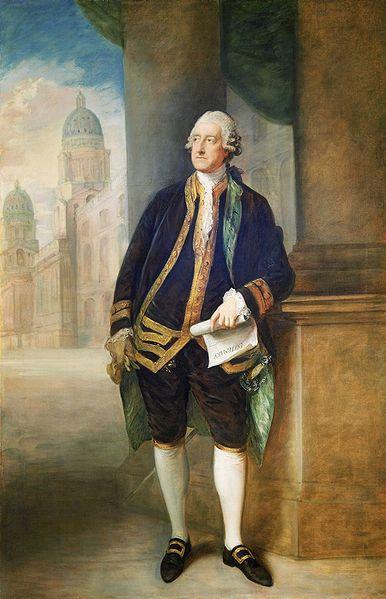
Then there is John Montague (1718-1792), the Fourth Earl of Sandwich who is generally credited with inventing the sandwich. Whats cooking.net gives two versions of the story explaining how he gave his name to what we call the sandwich.
The first being that he loved to gamble and often became so involved in his game that he did not want to break away and eat so he had his servant put some meat between two slices of bread which he could munch on while he gambled.
The other version refers to when he was a Cabinet Minister and would dine on meat between two slices of bread while he continued to work at his desk - in both cases his object was getting food into his system for energy and sustenance without having to take a break from his game or office work.
For Families With Young Children, Fast Food Can Be a Leisurley Dining Out Experience
As can be seen from above, fast food has been with us since humans first walked on the Earth. If anything, the modern fast food industry has made a great improvment in both the food and the way it is consumed.
Not only can one find more variety on the menu of most fast food establishments than was available to the Courier de Bois, the Earl of Sandwich and all the others from Neolithic man on down, but they have also made it both less expensive and easier for workers to get a meal faster and have time to sit down for a few minutes to eat with co-workers or relax for a few minutes with a book or newspaper while eating lunch.
Modern fast food restaurants also provide a relatively inexpensive and easy way for families with young children to dine out.
While sitting down as a family for dinner at home is a great way for a family to come together, it is also nice to dine out as well.
Ironically, for parents with toddlers in tow, a child friendly fast food restaurant is probably the best place to enjoy a leisurely meal with your spouse without having to leave the children at home with a baby sitter.
Links to Some of My Other Hubs on Food and Drink
- How Many Quarts are there in a Gallon?
Quarts and gallons are units of liquid measure that are currently used mainly in the United States. One gallon consists of four (4) quarts. However, we can break this down further to include teaspoons,... - How to Make an Omelet with an Ostrich Egg
One of the joys of travel is discovering and trying new things and this includes new foods as well. For most, the new food experience is found in restaurants. When traveling one has to eat out unless they... - Blueberries and Yogurt - An Easy to Make and Healthy Breakfast Treat
Yogurt is a great treat at any time of the day whether as a snack or part of a meal. While yogurt, especially the ones ready mixed with fruit or fruit flavors, is great straight out of the container, it... - Pan de Muertos - Bread of the Dead
Pan de Muertos are special loaves of sweet bread baked by Mexicans to celebrate Dia de los Muertos or Day of the Dead which is celebrated on November 2nd (All Souls Day in the Roman Catholic Church). Like... - How About a Romantic Breakfast?
When one thinks of romantic dining, images of a candle lit dinner with soft music playing come to mind. However, once you are married with each trying to manage a job and chauffeuring the teenagers, etc. such... - A Prohibition Era Wine Recipe
The basics of wine making are easy and inexpensive. Wine is nothing more than fruit juice that has been mixed with yeast which converts the sugar in the juice to alcohol. The alcohol then preserves the...
Links for More Information
- Welcome! : Slow Food USA
- Sandwich - Wikipedia, the free encyclopedia
- Sandwiches, History of Sandwiches
Sandwiches, History of Sandwiches


